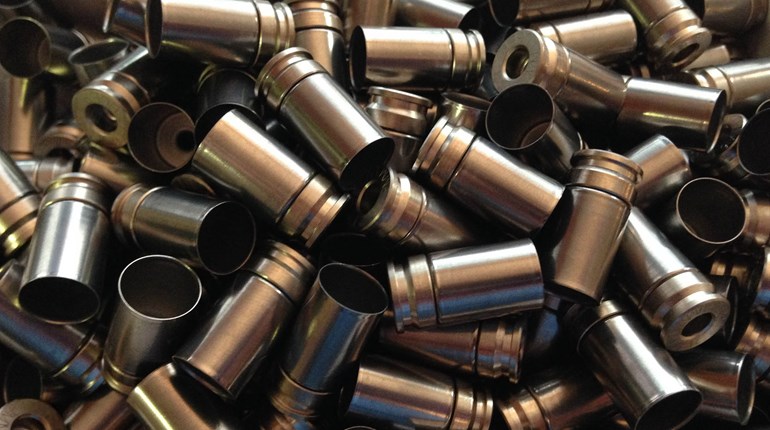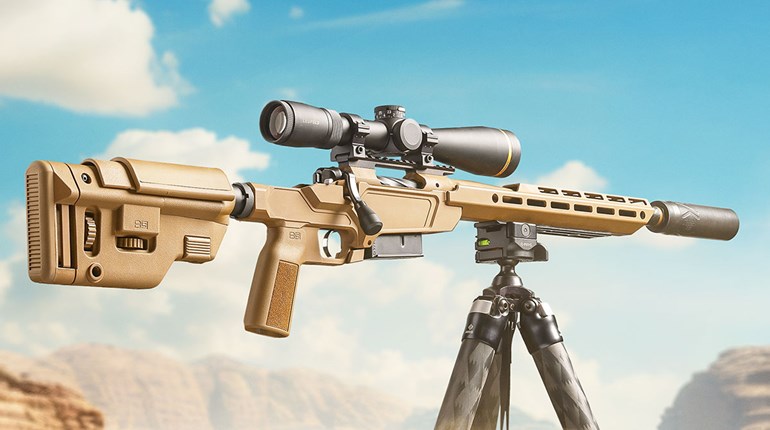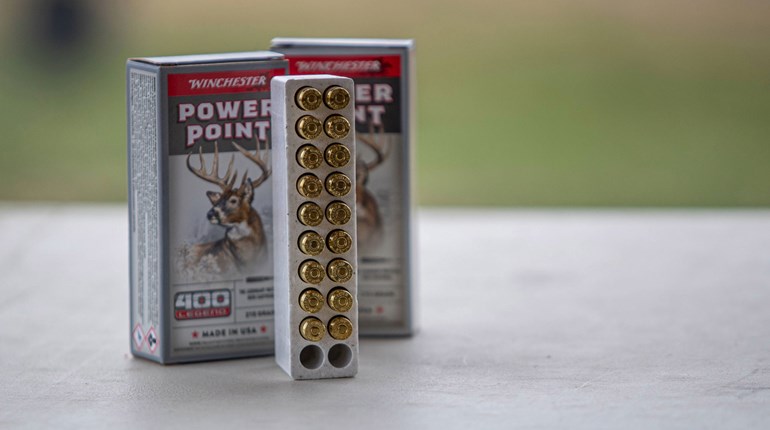
In the halcyon days of the 1970s and 1980s when U.S. civilians could purchase semi-automatic rifles from around the world, the Heckler & Koch G3-based HK91 series of roller-locked, delayed-blowback, semi-automatic rifles were a perennial favorite. This was due in no small part to their extremely high quality and unassailable reliability. However, a federal law in the late 1980s restricting the importation of semi-automatic rifles deemed to be "assault weapons" effectively blocked the H&Ks and a host of other foreign-made firearms from importation and sale to U.S. civilian consumers.
However, through a fortunate set of circumstances, a U.S.-based company is now producing a semi-automatic version of the G3 rifle in Connecticut on original H&K-licensed tooling, offering just about the closest thing to an original H&K rifle available on the U.S. market today. In fact, the circuitous storyline of how the company's PTR 91 series of rifles came to be produced here is matched only by the convoluted history and unique nature of the radical design itself.
Internal Matters
The G3-style rifle is not ordinary. In fact, the heart of the 7.62x51 mm G3 and its civilian counterpart the HK91—its system of operation—is what sets it apart. Unlike most repeating rifles that employ a gas system in which gas is bled from the bore to power the bolt carrier or piston backward, thereby unlocking a rotating bolt and cycling the action, the G3 series of rifles employs a recoil-operated delayed-blowback system of operation. The closed-bolt G3/HK91 system features a non-rotating bolt head with twin rollers, one located on each side of the bolt head, which lock into corresponding detents housed within the trunnion inside the stamped-steel receiver. The force required to push the twin rollers on the bolt head back into the bolt head body and out of the detents keeps the rifle's action closed for a long enough period that chamber pressures are reduced sufficiently for the action to open safely.
An interesting side note to the design is the fact that the inside of the chamber of the rifle features longitudinal fluting. This was done because it was discovered that fired cases had a tendency to stick in the chambers with this system of operation unless the case and chamber were properly lubricated. As maintaining proper lubrication of these areas in combat conditions would be practically impossible, it was determined grooves inside the chamber would help ensure consistent and repeatable cartridge case removal from the chamber during firing. In discussing this with one of PTR 91 Inc.'s engineers, it was explained to me that the flutes allow expanding gases from the fired cartridge to flow out and around the cartridge case to help free it for extraction.
Another way it differs radically is in regard to the nature of its manufacture. Whereas its contemporaneous competitors in the late 1950s (the U.S. M14, the FN FAL and even the AR-10), employed complex machined-steel receivers or ultra-modern aluminum forgings, the G3 rifle was manufactured using much simpler tooling for its stamped-steel receiver and other assorted parts. The result was an ultra-modern modular rifle design that could be manufactured with relative ease and at reasonable costs.
In fact, modularity was a key element to the design. Although the elder sibling of the family, the G3,
was chambered in 7.62x51 mm (.308 Win.), Heckler & Koch soon set about developing variants in other chamberings such as 5.56x45 mm (.223 Rem.), 9x19 mm and even 7.62x39 mm, as well as belt-fed machine gun variants and ultra-short carbines. Due to the modular nature of the design, many of these variants featured parts commonality that reduced development time and costs.
Immigrant, or Emigrant?
Complementing the unorthodox nature of the G3's design is its equally unorthodox background. While the 7.62x51 mm Heckler & Koch G3 rifle, adopted by West Germany in 1959, is considered to be a uniquely German design, it actually has a shared lineage spanning World War II-era Germany and postwar France and Spain.
While the roller-locking design concept had existed in one form or another for some time, the earliest direct progenitor of the G3 design was the Mauser Stg45. Developed by the Germans during the desperate final years of World War II, this impressive design employed the unique roller-locked blowback system of operation. However, the situation Germany faced during 1945 combined with the hobbled state of German arms making at the time ensured that the Stg45 would never become an established arm.
The operational concept behind it would continue, though, through the efforts of a group of Mauser engineers led by Ludwig Vorgrimler working under French control in Alsace beginning in 1948. However, after a few years of refining the concept, Vorgrimler grew to be unsatisfied with working there and accepted an offer to participate in a new rifle program in Spain. It was here that he further continued his work on the roller-locked design, developing the Spanish rifle that would come to be known as the CETME. Soon thereafter, German interest in the design resulted in an agreement in 1954 between the Spanish government and the new company Heckler & Koch to prepare and manufacture the CETME rifle. The result was that, after several more years of refinement and development, the Heckler & Koch-refined CETME rifle was adopted by West Germany as the G3 rifle in 1959.
The Portuguese Connection
So how did a U.S.-based company end up producing this uniquely German rifle design on original licensed tooling right here in the United States? Ironically through another European country—Portugal.
In 2003, PTR 91 Inc. (then named JLD Enterprises after its founder Jose Luis Diaz) learned that the H&K-licensed G3 arms making plant equipment in Portugal was about to be offered for sale. The company managed to purchase thousands of parts and accessories as well as the tooling, machinery, measuring gauges, original engineering drawings and diagrams required to manufacture the rifle and set it all up in its Connecticut facility.
The result was the company's means to produce semi-automatic renditions of the famous G3/HK91-pattern rifle on original tooling right here in the United States in its PTR 91 series of rifles. In fact, PTR 91 Inc. has a surprisingly robust listing of offerings, ranging from precision rifle variants to shortened carbines to varmint rifles in .243 Win., to even a version chambered in 7.62x39 mm.
The PTR 91 rifles, however, are not merely direct recreations. In fact, the acronym in the series' name indicates where PTR 91 Inc. tweaked the design a bit. Recognizing that the roller-locked H&K-style rifle had an enviable reputation for inherent accuracy, PTR 91 Inc. decided to build upon that theme. In fact, PTR stands for "precision tactical rifle."
Precision in Focus
A quick glance at a semi-automatic PTR 91 rifle reveals a rifle that would be hard for many to distinguish from an original HK91. However, a closer look reveals some interesting changes that PTR 91 Inc. applied to its design, specifically in the context of the "precision" designation in the PTR moniker.
First and foremost is the rifle's barrel. Whereas original H&K rifles featured a tapered barrel diameter forward of the front sight assembly, the PTR 91 rifles have a bull barrel with a 0.75-inch diameter for stiffness and rigidity. Internally, it features five-groove rifling and a 1:12 rate of right-hand twist.
An additional change is inside the chamber. PTR 91 Inc., based upon experimentation with its barrels, discovered a reduction in the number of flutes in the chamber resulted in a reduction of perceived recoil with no negative effect upon reliability.
Complementing the bull barrel is the company's rear sight assembly. Like the original, it features a rotating drum with 100-, 200-, 300- and 400-meter settings. While the 200 through 400 settings have a peep aperture, the 100-meter setting is a quick-acquisition V-notch. The major change by PTR 91 Inc. to the rear sight assembly is the addition of a knurled windage-adjustment target knob for easier sight adjustments.
Another change that PTR 91 Inc. incorporated with its rifles is relatively minor, but makes mounting an optic on the company's rifles much easier in my experience. Unlike most current-day AR-style rifles with their expanses of Picatinny rail, the 1950s-era G3-pattern rifle does not provide an easy means for attaching an optic. Heckler & Koch's answer was a claw mount that attached around the top of the receiver. However, these claw mounts often required hand fitting to a particular rifle, and were consequently serial numbered to ensure they remained with their intended rifle.
On its rifles, PTR 91 Inc. CNC machines the ledges on the receiver that interface with the claw mount to ensure they are uniformly true and accurate. Although the company warns that the variances and hand fitting evident with these surplus claw mounts may still cause the need for a bit of fitting on the PTR 91 rifles, I have been able to attach surplus units on two PTR 91 rifles I have handled with no problems.
A Classic Revisited
Although the company has a wide variety of offerings in their rifle line, I opted to test the most traditional variant it offers—the PTR 91 F. This variant, apart from the above-mentioned changes to the basic design, represents the company's take on the traditional G3/HK91-pattern rifle.
The PTR 91F rifle (with the "F" indicating it is equipped with an original-style flash suppressor) I received for testing was quite impressive. Weighing in at 91⁄4 pounds and featuring an 18-inch barrel, the PTR 91 F is by no means a lightweight. However, it balanced and handled well.
The fit and finish of the rifle was excellent. The entire rifle featured an attractive powder-coated black finish applied over a parkerized finish on the steel. The receiver, which is stamped on H&K spec dies from 0.059-inch thick steel just like the original, featured clean welding marks and an evenly applied finish. All the controls of the rifle function positively, from the safety to the cocking lever to the magazine release.
Of note is the fact that the rifle, like all of the PTR 91 Inc.'s offerings, features a polymer lower grip assembly, bringing it in line with the latest iterations of the German G3A3 A1 upgrade of the design Heckler & Koch developed in the early 1990s. As opposed to the earlier-style steel lower grip assembly, this unit offers a slimmer grip and lighter weight.
Operation of the G3/HK91-based PTR 91 F is simple and straightforward. To fire the gun, a loaded magazine is inserted up into the magazine well. To charge the action, a cocking lever located atop the upper left side of the cocking lever tube above the barrel needs to be flipped up and retracted fully then released to chamber a round. Then, the rotating safety lever on the left side of the plastic lower grip assembly should be rotated down to the "F" for fire. There is no last-shot, bolt-hold-open mechanism on the rifle, and the only means of manually locking it open is by rotating the cocking lever at its rearmost position into a recess on the cocking lever tube.
To field strip the rifle, one simply pulls the two buttstock locking pins from the rear lower receiver just behind the pistol grip (the pins can be stored on two holes at the rear of the buttstock). Once removed, the entire buttstock/recoil spring assembly can be pulled rearward off the back of the receiver and the lower grip assembly can then be rotated down and away from the stamped-steel receiver. By using the cocking lever, the bolt carrier assembly can be removed out of the rear of the receiver. To access the modular trigger housing inside the plastic lower grip assembly, the safety can be rotated until it points upward and then can be pulled out of the side of the lower. Once done, the trigger housing can be pulled up and out of the plastic lower.
Matching Expectations
For testing, I acquired a surplus German claw mount and Hensoldt 4X scope from Sportsman's Guide (www.sportsmansguide.com) and installed it on the rifle. The claw mount locked solidly onto the receiver of the PTR 91 F with only a small amount of effort. Over the course of firing a few hundred rounds, the rifle performed flawlessly. Cartridge cases were ejected smartly forward and to the right of the rifle.
In having tested and fired H&K-pattern rifles in the past, I have learned to expect good accuracy from these roller-locked designs—and the PTR 91 F did not disappoint me in this department. Frankly, for being a standard-production rifle with no accuracy tuning, the performance of this rifle was quite impressive. Although I tested the rifle with two 150-grain loadings and one 180-grain loading, I did find that the rifle seemed to prefer the lighter loadings. Although it functioned well with all three, the 180-grain loading created excessive recoil during firing and might cause unnecessary stress on the rifle over the long run.
PTR 91 Inc., through its PTR 91 series of rifles, offers U.S. civilian consumers an opportunity that has not been around since the late 1980s. And due to the company's obvious commitment to quality, the PTR 91 series of rifles should be tough for any semi-automatic rifle enthusiast to pass up.
Fortunately for U.S. consumers, the PTR 91 is not the only beneficiary of recent moves by U.S. manufacturers to purchase European arms-making equipment and resettle it here in the United States.
In fact, in addition to producing the G3 rifle, Portugal had also developed a 9x19 mm sub-machine gun for its military. Somewhat similar in appearance to a Heckler & Koch MP5/HK94 and dubbed the "Lusa," this design combined elements of H&K-pattern designs and the Israeli Uzi. The design employs an H&K-style lower and pistol grip combined with the straight-blowback operation and detachable barrel design of the Uzi. The result is a hybrid of an H&K-inspired design and a more traditional Uzi-inspired design.
In 2004, all the Protuguese dies, tooling, fixtures and manufacturing rights of the design were sold to Lusa USA in Hooksett, NH, [(603) 485-4800; www.lusausa.com], which is now producing it as a civilian-legal, semi-automatic rifle.






































